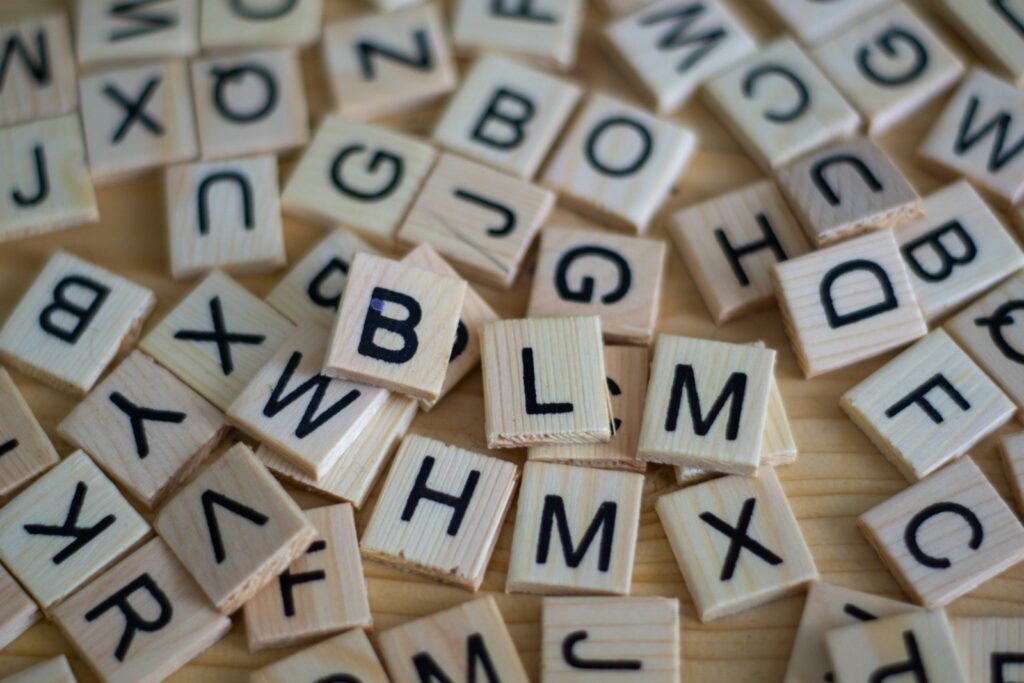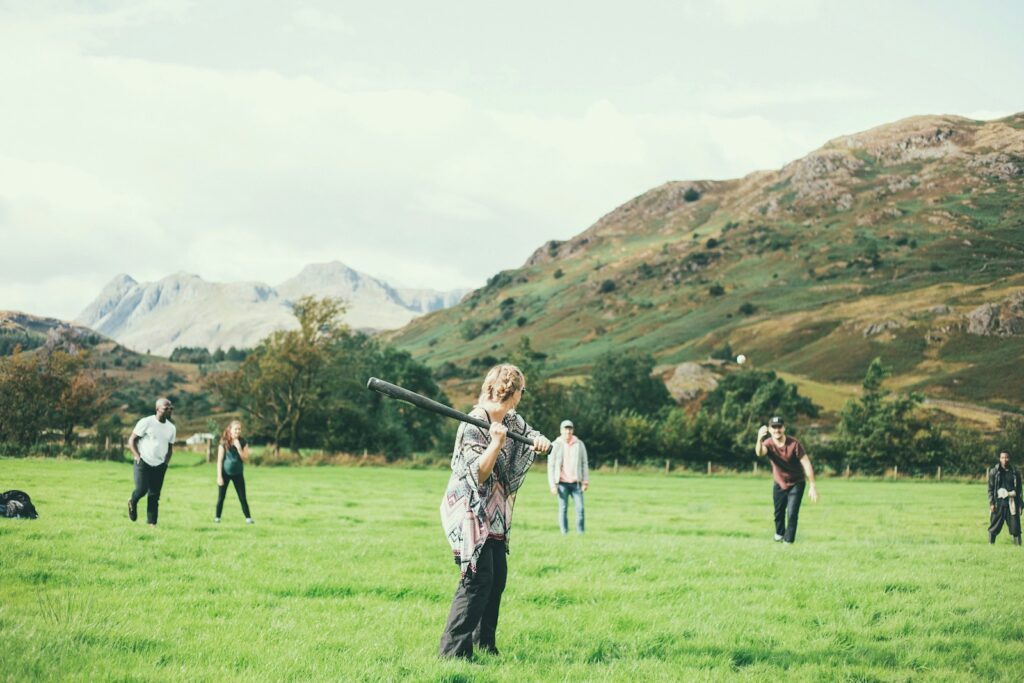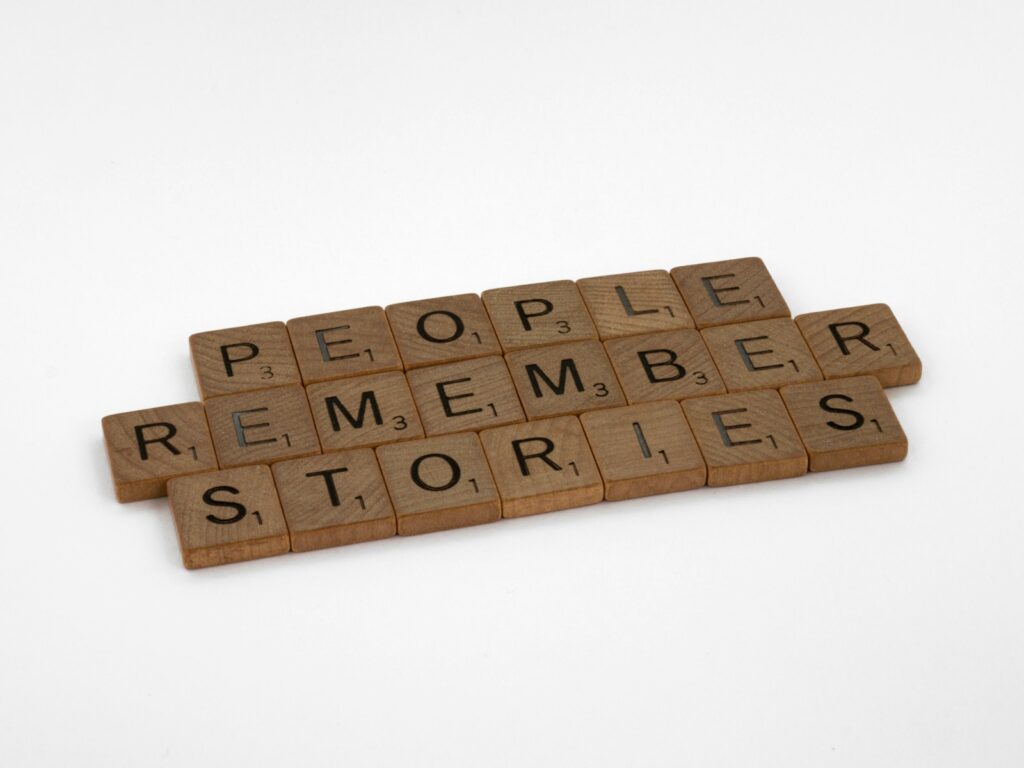Table of Contents
47 Amazing Team Building Games
Team building games are valuable tools for fostering camaraderie, communication, and leadership skills within a group.
These activities bring team members together outside their usual work environment, promoting better relationships and enhancing overall team collaboration.
Building an Inclusive Team Culture
Creating an inclusive team-building experience is crucial for making everyone feel accepted and valued. Here are some considerations to ensure inclusivity:
- Hiring Outside Experts: Inclusive team building involves everyone, and hiring an outside expert can guide the team-building event effectively.
- Tailoring Activities: Be mindful of introverts, considering activities suitable for small group interactions.
- Addressing Physical Limitations: Be cautious with physically active games to ensure inclusion for all team members, including those with physical impairments.
Before selecting a team building game, assess everyone’s abilities through anonymous polls to ensure an activity that accommodates everyone’s participation.
Two Truths, One Lie
Team size: 3+ people
Time: 2–3 minutes per person
In this icebreaker, each team member presents two true facts and one false statement about themselves. The group votes on which statement they believe is the lie.
This game is ideal for teams still getting to know each other, fostering deeper conversations and understanding.
Penny for Your Thoughts

Team size: 5+ people
Time: 2–3 minutes per person
Utilizing a box of pennies with years corresponding to the youngest team member’s age, each member draws a coin and shares a significant personal story from that year. This stress-free icebreaker encourages team members to share personal stories, creating stronger connections.
Mood Pictures
Team size: 5+ people
Time: 2–3 minutes per person
Participants select images representing their current mood and share why they resonate with their chosen pictures.
This creative icebreaker is an effective way to start meetings or workshops, fostering a unique approach to discussing emotions and expectations.
One Word Exercise

Team size: 3+ people
Time: 5–10 minutes
Team members express their immediate thoughts on a meeting topic by writing one word on a post-it. This exercise allows for a quick assessment of the team’s feelings, providing valuable insights before delving into the meeting’s main discussions.
Back-to-Back Drawing
Team size: 4+ people
Time: 5–10 minutes
In this communication-focused game, teams work in pairs, with one describing an image to the other, who must draw it without seeing it. This activity enhances listening skills and encourages creativity and innovation in communication.
Birthday Line Up

Team size: 8+ people
Time: 10–15 minutes
Team members arrange themselves by birthdays without verbal communication, promoting problem-solving skills, cooperation, and non-verbal communication. This exercise, though challenging, fosters a sense of shared accomplishment.
Charades

Team size: 8–10 people
Time: 10–25 minutes
Dividing the team into groups, participants act out the use of random objects for their team to guess. This classic game provides a fun break, promoting creativity and teamwork.
Swift Swap
Team size: 10–20 people
Time: 10–15 minutes
Teams observe each other briefly, then one team turns around while the other makes subtle changes to their appearance. The first team must identify the changes, enhancing observational and non-verbal communication skills.
Code of Conduct

Team size: 5+ people
Time: 20–30 minutes
This game helps set the tone for a new project or workshop by establishing shared values. Teams discuss and record ideas under the categories of “meaningful” and “enjoyable,” creating a code of conduct to guide the upcoming collaboration.
Common Thread
Team size: 10+ people
Time: 30 minutes
Teams identify commonalities within their group, fostering connection and providing an opportunity to reunite divided teams. This game encourages open communication about shared interests.
Show and Tell

Team size: 3+ people
Time: 2–3 minutes per person
How to play: Ask everyone in your team to bring something they’re proud of or that brings them joy to your next meeting.
This can be anything from a pet to a plant, a painting they did, or a certificate they received. Everyone gets two to three minutes to show off their item and answer questions from the team if they have any.
Why this exercise is great: Show and tell isn’t just fun for kids, it’s also a great way to connect with your team. You’re probably going to learn something new about your teammates and may get a couple of conversation starters for your next meeting from this game.
Photo Caption Contest
Team size: 5+ people
Time: 10–15 minutes
How to play: Collect a few funny photos—for example, a few memes that have recently been circling the internet. Send these to your team before the meeting and ask everyone to submit their best photo caption for each image.
You can put these together in a quick presentation and present them to your team during the call. You can have a good laugh together and even vote for the best captions.
Why this exercise is great: This exercise is a fun way to get creative as a team and have a good laugh together.
Morning Coffee

Team size: 3+ people
Time: 15–30 minutes
How to play: Schedule regular coffee calls for your remote team to give everyone a chance to get to know each other like they would in an office setting.
You can schedule team calls with four to five people or randomly assign two people to each other that switch every time. You can offer these casual calls once a week, bi-weekly, or once a month, depending on your team size and the interest in this opportunity.
Why this exercise is great: Remote teams don’t often get a chance to just chit-chat and get to know each other without talking about work or feeling like they’re wasting meeting time.
By designating 15–30 minutes on a regular basis to a casual call, your team members will have a chance to bond with people they might not typically interact with.
Lunch and Learn
Team size: 5+ people
Time: 30 minutes
How to play: Hold a weekly or monthly “lunch and learn” where one team member presents a topic to the whole team during their lunch break.
This presentation can be on a tool everyone uses at work, on a lesson learned from a recent project, or even on a book they read that everyone can learn from.
Why this exercise is great: These events are a great opportunity for your team to connect in a more casual yet educational setting. If your team budget allows, send restaurant gift cards to your team members so they can order lunch for the call.
Online Group Game

Team size: 3+ people
Time: 30–60 minutes
How to play: Invite your team to play a game online together. This can be an actual video game if everyone happens to use the same console at home or you can download an interactive game (like Jackbox) which you can screen share with the rest of the group.
Why this exercise is great: Playing a video game or an interactive game that has nothing to do with work can be a fun way to switch things up, create a more casual work environment, and get to know each other better. It will also give people with great sportsmanship a chance to shine!
Trivia Games
Team size: 6–20 people
Time: 30–90 minutes
How to play: Start a meeting with a quick game of trivia or host a regular virtual trivia night at the end of the workday.
You can play a game of office trivia (e.g., facts about the company) or pick random other themes like TV shows, music, or national parks. To mix things up, ask other team members to host trivia night.
Why this exercise is great: Whether you’re making the trivia game office-themed or creating a regular team activity that takes everyone’s minds off of work, you’ll get to spend time with your team playing a competitive, educational, and entertaining game that gives everyone a chance to bond.
Quarterly Challenge
Team size: 3+ people
Time: One month
How to play: Create an optional challenge for your team to participate in. The challenge can be centered around healthy eating, meditation, journaling, or reading.
Create a chat or thread where your teammates can exchange their experiences, wins, and questions to keep each other motivated and accountable throughout the month.
Make sure your team knows that participation is optional. It never hurts to ask for feedback to spark future team challenge ideas.
Why this exercise is great: Creating a challenge like this for your team shows them that you care about their work-life balance. By offering a quarterly challenge, you provide your team with the opportunity to share an experience together. Plus, it’s always easier to complete a challenge when you have a team who supports you and an incentive to work toward.
Personality Test

Team size: 5+ people
Time: Any
How to play: Send a personality test to your team and ask everyone to share their results in a chat or during your next team meeting. This can be a formal test like the Enneagram or StrengthsFinder.
For something more lighthearted, you can send a fun quiz like the Sorting Hat to find out which Hogwarts house you belong in or a Buzzfeed quiz (e.g., “What Kitchen Appliance Are You?”).
Why this exercise is great: Depending on the type of quiz your team takes, this can become a funny icebreaker before you start a meeting or turn into a discussion on your team’s combined strengths and challenges.
Your First Idea

Team size: 5–12 people
Time: 10–20 minutes
How to play: Ask everyone in your team to write down the first idea that pops into their head when they’re presented with the problem. Compile the list and review it as a team.
A fun twist on this game is to ask everyone to write down their worst idea. After reviewing with the team, you may realize that some ideas aren’t that bad after all. You can play this game with a real-life problem, a fictional one, or when you’re brainstorming new ideas to pitch.
Why this exercise is great: We often get too much into our heads about problems and solutions. By writing down the first solution that comes to mind, we can uncover new perspectives and fixes.
Back of the Napkin
Team size: 6–24 people
Time: 15–20 minutes
How to play: Divide your team into groups of two to four and present them with a variety of open-ended problems. These can be work-related, imaginary, or even environmental problems.
Every team gets a napkin and pen that they have to sketch or write their solution on after they’ve discussed the issue as a group. These will then be presented to the rest of the team.
Why this exercise is great: Some of the best ideas have allegedly been recorded on napkins (hey, it worked for the creators of Southwest Airlines). This game encourages your team to work together, channel their creativity in a new way, and solve creative problems together.
DIY Team Challenges

Team size: 5–12 people
Time: 30–60 minutes
How to play: Have every team member come up with a unique problem-solving activity on their own and present it to the group. These challenges can be physical, mental, or even creative.
You can choose to have your team complete these challenges together after they’ve all been presented.
Why this exercise is great: When your team comes up with their own challenges, they’re forced to get creative and think outside of the box. Plus, it’s a great opportunity to watch your team work together to solve the challenge once it’s presented to them.
Spectrum Mapping
Team size: 5–15 people
Time: 30–60 minutes
How to play: Present your team with a topic and ask them to write down their thoughts on sticky notes. After everyone has written their thoughts, arrange them together on a spectrum with similar ideas on the left and outliers on the right.
Why this exercise is great: Visualizing diverse perspectives on a spectrum can be a powerful way to help your team recognize their differences. Discussing these differences and finding common ground can lead to innovative solutions and create a more inclusive work culture.
Empathy Exercise: “What Would ‘X’ Do?”
Team size: 5–10 people
Time: 45–60 minutes
How to play: Present your team with a problem and ask each member to approach it as if they were a famous person they admire.
This person could be someone from history, a celebrity, or even a fictional character. Each team member can share their approach and discuss the different perspectives and solutions.
Why this exercise is great: This exercise encourages your team to think outside of their usual mindset and consider alternative approaches. It fosters creativity and empathy by exploring problems through the lens of others.
Team Pursuit

Team size: 6–24 people
Time: 1–3 hours
How to play: Form groups of two to six people for a series of challenges. Create cerebral, skill, and mystery challenges that test logic, intelligence, creativity, and out-of-the-box thinking.
This can be organized using a team pursuit package or by designing your own set of challenges.
Why this exercise is great: Team pursuit fosters collaboration, allowing each member to showcase their strengths. It’s a fun challenge that brings the team closer together, revealing hidden talents and creating shared memories.
Code Break
Team size: 8–24 people
Time: 1–3 hours
How to play: Outback Team Building offers self-hosted, remote-hosted, or on-site hosted events with various codes to find and break.
This brain teaser challenges your team’s creative thinking and works well with large groups, encouraging collaboration in smaller teams.
Why this exercise is great: Code Break promotes creativity, competition, and teamwork. Solving codes together enhances communication and problem-solving skills.
Escape Room

Team size: 3+ people
Time: 2–3 hours
How to play: Visit an escape room or create your own. Choose a theme and explore mysteries with your team. Creative minds can craft DIY escape rooms, enhancing the experience.
Why this exercise is great: Solving escape room mysteries reveals teammates’ strengths and weaknesses, fostering communication, collaboration, trust, and creating lasting shared memories.
Perfect Square
Team size: 4–12 people
Time: 15–30 minutes
How to play: Blindfolded team members pass a rope around to form a perfect square. This exercise enhances communication and listening skills.
Why this exercise is great: Beyond geometric shapes, it’s a humorous and insightful way to emphasize clear communication within the team.
Memory Wall

Team size: 5+ people
Time: 15–30 minutes
How to play: Share work-related memories on sticky notes, creating a positive bonding activity.
Why this exercise is great: Reflecting on positive experiences fosters team spirit and leaves teammates smiling, making it an ideal end-of-week or workshop activity.
47 Amazing Team Building Games
Turn Back Time
Team size: 5–10 people
Time: 20–30 minutes
How to play: Share unique life memories in a quiet setting, promoting deeper connections among team members.
Why this exercise is great: Enhances personal connections and priorities, fostering a sense of togetherness in times of stress or disconnection.
Links to other interesting articles:
Paper Plane
Team size: 6–12 people
Time: 20–30 minutes
How to play: Collaborate on designing long-distance paper planes within a tight timeline. This exercise focuses on communication, delegation, and time management.
Why this exercise is great: Enhances teamwork and communication skills, combining creativity with practical problem-solving.
Build a Tower
Team size: 8–16 people
Time: 20–30 minutes
How to play: Teams use spaghetti, tape, string, and a marshmallow to build the tallest tower. This challenge improves problem-solving and communication.
Why this exercise is great: Encourages collaboration under time constraints, fostering creativity and teamwork.
Flip it Over

Team size: 6–8 people
Time: 20–30 minutes
How to play: Teams stand on a sheet, aiming to flip it over without stepping off. This exercise promotes clear communication and cooperation.
Why this exercise is great: Challenges teammates with an oddly difficult task, revealing how well they cooperate.
Sneak a Peek
Team size: 4–20 people
Time: 30 minutes
How to play: Teams replicate a Lego structure after one member briefly views it, promoting teamwork and communication.
Why this exercise is great: Focuses on communication and teamwork as team members describe and recreate different aspects of the structure.
47 Amazing Team Building Games
Pyramids
Team size: 8–24 people
Time: 30 minutes
How to play: Teams build paper cup pyramids in a race against time, emphasizing communication and collaboration.
Why this exercise is great: A fun mid-day break, fostering communication skills and promoting teamwork.
Shipwrecked
Team size: 8–25 people
Time: 30 minutes
How to play: Teams prioritize and negotiate for survival items on a deserted island, testing problem-solving and leadership skills.
Why this exercise is great: Challenges teams to make quick decisions, emphasizing collaboration and leadership.
Team Flag

Team size: 6–20 people
Time: 30–45 minutes
How to play: Teams create emblems or flags representing their identity, encouraging creativity and collaboration.
Why this exercise is great: Fosters creative expression, requiring teams to collaborate on design and presentation.
Salt and Pepper
Team size: 6–20 people
Time: 45–60 minutes
How to play: Teams match pairs that go well together, promoting interaction, and improving communication skills.
Why this exercise is great: Encourages bonding and interaction among team members, enhancing communication in a fun setting.
Sell It
Team size: 3+ people
Time: 45–90 minutes
How to play: Teams create a marketing plan for a random object, promoting creativity and teamwork.
Why this exercise is great: A fun and creative way to enhance marketing and sales skills, allowing teams to collaborate on product pitches.
47 Amazing Team Building Games
The Barter Puzzle
Team size: 4–12 people
Time: 1–2 hours
How to play: Teams complete jigsaw puzzles, negotiating and trading missing pieces with other teams, promoting group decision-making.
Why this exercise is great: Challenges teams to collaborate on solving puzzles, enhancing problem-solving skills.
The Minefield

Team size: 4–10 people
Time: 15–30 minutes
How to play: Blindfolded members navigate a minefield guided by teammates, fostering trust, active listening, and clear communication.
Why this exercise is great: A fun trust exercise that enhances teamwork and communication.
Earth-Ball
Team size: 5–20 people
Time: 15–45 minutes
How to play: Teams keep a balloon or ball in the air without consecutive touches, promoting movement and strategizing.
Why this exercise is great: Encourages physical activity, team coordination, and strategic planning.
Scavenger Hunt
Team size: 8+ people
Time: 45–90 minutes
How to play: Organize a scavenger hunt with tasks or items to collect, encouraging teamwork and exploration.
Why this exercise is great: Ideal for team bonding, learning fun facts, and offering a mix of creativity and competition.
Egg Drop
Team size: 4–12 people
Time: 60–90 minutes
How to play: Divide your team into groups of two or three people and give each team a raw egg (keep some extras in case they break before the grand finale). Then put out supplies like tape, straws, plastic wrap, balloons, rubber bands, newspapers, and any other materials you think might help protect the eggs from a fall.
Each team has to use these materials to build a contraption around the egg, with the goal of keeping it from breaking when dropped from a certain height (you can use a ladder or have teams drop their eggs from a second-story window).
After the allotted building time (30–45 minutes), each team presents their creation and then watches as it’s dropped. The team whose egg survives the fall intact wins.
Why this exercise is great: This activity encourages creativity, teamwork, and problem-solving. It also provides a hands-on, engaging experience for the team.
Team Storytelling

Team size: 6–20 people
Time: 45–60 minutes
How to play: Begin a story and have each team member add a sentence or two to build on it. The catch is that each person can only see the previous sentence, not the entire story.
The result is often a hilarious and unexpected tale that reflects the creativity and collaboration of the team.
Why this exercise is great: This activity improves communication, teamwork, and adaptability. It also brings out the team’s collective imagination.
Blind Drawing
Team size: 4–16 people
Time: 30–45 minutes
How to play: Pair up team members and have one person from each pair wear a blindfold. The other person guides their blindfolded teammate in drawing a specific object or image without explicitly naming it.
This could be done on a flip chart or using individual whiteboards. After a set time, teams reveal their drawings and compare them. It’s a fun and enlightening experience that showcases communication skills.
Why this exercise is great: Blind Drawing enhances communication, trust, and the ability to give and follow instructions. It also provides a lighthearted way to reflect on the importance of clear communication.
47 Amazing Team Building Games
Problem-Solving Scenarios
Team size: 4–12 people
Time: 30–45 minutes
How to play: Present the team with various problem-solving scenarios related to your work or industry. These scenarios should require creative thinking, collaboration, and strategic planning. Teams discuss and come up with solutions, presenting their ideas to the larger group.
Why this exercise is great: Problem-Solving Scenarios promote critical thinking, teamwork, and the application of knowledge in a practical context. It’s an effective way to enhance problem-solving skills within your team.
Team Charades
Team size: 6–20 people
Time: 30–45 minutes
How to play: Create a list of work-related terms, industry jargon, or company-specific phrases. Divide the team into two or more smaller groups. Each group takes turns selecting a term from the list and acting it out (without speaking) while the other team tries to guess. The team with the most correct guesses wins.
Why this exercise is great: Team Charades adds a touch of fun to the workplace while encouraging creativity, communication, and teamwork. It’s a lighthearted activity that fosters camaraderie and laughter.
Team Cookbook
Team size: Unlimited
Time: Ongoing
How to play: Initiate a team cookbook project where each team member contributes their favorite recipe. This can include a brief story about why the recipe is special to them. Compile the recipes into a digital or physical cookbook that everyone can use.
Why this exercise is great: The Team Cookbook is a creative and inclusive way to celebrate diversity, promote team bonding, and share personal stories. It also results in a tangible product that the team can enjoy for years to come.
Reverse Brainstorming
Team size: 4–12 people
Time: 30–45 minutes
How to play: Choose a specific challenge or problem that your team is facing. Instead of brainstorming solutions, engage in reverse brainstorming by generating ideas on how to exacerbate or worsen the problem. Once you have a list of negative ideas, work together to flip them into positive, solution-oriented concepts.
Why this exercise is great: Reverse Brainstorming encourages creative thinking, collaboration, and a shift in perspective. It’s an effective tool for tackling challenges from different angles and uncovering innovative solutions.
Team Values Exercise
Team size: 6–20 people
Time: 45–60 minutes
How to play: Facilitate a discussion where team members identify and prioritize core values they believe are crucial for the team’s success. Create a visual representation of these values through images, symbols, or a collaborative art project.
Why this exercise is great: The Team Values Exercise helps teams align on shared values, fostering a sense of purpose and unity. It encourages open communication and collaboration while highlighting the importance of shared principles.
Desert Island Survival
Team size: 8–20 people
Time: 60–90 minutes
How to play: Imagine the team is stranded on a desert island. Provide a list of potentially useful items, and ask the team to collectively rank them in order of importance for survival. This prompts discussions about priorities and encourages teamwork.
Why this exercise is great: Desert Island Survival is a scenario-based activity that stimulates strategic thinking, communication, and decision-making. It also helps identify how the team collectively approaches problem-solving and resource allocation.
Team Journaling

Team size: Unlimited
Time: Ongoing
How to play: Introduce a team journal where members take turns documenting their thoughts, reflections, and experiences. Set a schedule for passing the journal among team members. Encourage both professional and personal entries to strengthen connections.
Why this exercise is great: Team Journaling promotes self-awareness, empathy, and team cohesion. It provides an outlet for expression and fosters a deeper understanding of each team member’s perspective.
Collaborative Drawing
Team size: 4–16 people
Time: 30–45 minutes
How to play: Provide each team member with a sheet of paper and markers. Start a drawing on one person’s paper, and after a set time, have everyone pass their sheet to the next person. Continue this process, with each team member adding to the drawings. The end result is a collaborative masterpiece.
Why this exercise is great: Collaborative Drawing encourages creativity, adaptability, and teamwork. It’s a visual representation of how different perspectives contribute to a collective outcome.
Team Reflection Session
Team size: Unlimited
Time: 60–90 minutes
How to play: Conduct a structured reflection session where team members discuss recent projects, challenges, and successes. Use prompts or guided questions to facilitate the conversation, allowing everyone to share insights and lessons learned.
Why this exercise is great: The Team Reflection Session enhances communication, self-awareness, and collective learning. It creates a space for open dialogue and strengthens the team’s ability to adapt and improve.
Speed Networking
Team size: 8–20 people
Time: 30–45 minutes
How to play: Set up a speed networking session where team members pair up for brief, timed conversations. Use icebreaker questions or specific topics to guide the discussions. Rotate participants to ensure everyone interacts with each other.
Why this exercise is great: Speed Networking promotes relationship-building, and communication skills.
Links to other interesting articles:
19-amazing-virtual-team-building-activities
35-powerful-team-building-activities
5-minute-team-building-activities
Virtual Wine Tasting Competition

In the ever-evolving landscape of virtual team building, the Virtual Wine Tasting Competition stands out as an engaging and dynamic experience. This activity transcends the traditional boundaries of a wine tasting, transforming it into a lively virtual blind tasting competition. If you are seeking a vibrant way to foster team connections and have a blast, this is the perfect choice!
47 Amazing Team Building Games
Description:
The Virtual Wine Tasting Competition is designed to create an environment that closely mirrors in-person events while leveraging the power of virtual tools. It goes beyond the ordinary wine tasting, turning it into a group experience that promotes genuine human interaction in a virtual setting.
Added Value:
- Utilization of Virtual Tools: The focus of this virtual team-building activity is on harnessing the capabilities of virtual tools. It maximizes the potential of online platforms to deliver an experience that feels remarkably close to being physically present.
- Dynamic Group Experience: Unlike traditional wine tastings, this activity places a strong emphasis on creating a group experience. It encourages participants to engage, connect, and collaborate in a way that transcends the limitations of a virtual environment.
Blind Tasting Competition

For those who believe wine should be enjoyed with a touch of excitement and laughter, the Bling Tasting Competition is an excellent choice. This innovative team-building activity infuses a sense of fun into the world of wine, making it a perfect fit for a diverse group of friends or colleagues.
Description:
The Bling Tasting Competition kicks off with a warm welcome featuring glasses of sparkling wine, setting the tone for an evening of networking and camaraderie. Participants receive a dynamic wine-tasting crash course before being divided into teams.
Armed with newfound knowledge, teams embark on a blind tasting competition featuring three wines, with the winning team revealed after each round. It’s an engaging and lively activity that guarantees enjoyment for all involved.
Added Value:
- Promotion of Human Connections: Unlike traditional wine tastings, the Bling Tasting Competition places a strong emphasis on fostering human connections within the group. It goes beyond the tasting experience, encouraging participants to interact and bond.
- Inclusive for Non-Alcoholic Drinkers: The creation of teams allows even non-alcoholic drinkers to participate, with spitting encouraged. This inclusivity ensures that everyone can join in the fun, regardless of their beverage preferences.
- Ideal for Any-sized Group: Whether you’re organizing this for a small team or a larger group, the Bling Tasting Competition is designed to cater to any-sized audience, making it a versatile choice for various occasions.
Incorporate these team-building games into your routine to enhance communication, camaraderie, and overall team dynamics. Remember to tailor activities to accommodate everyone’s abilities and preferences.
For more ideas on virtual team building, visit The Wine Voyage’s Virtual Team Building Guide.
Benefits of Team Building
Team building is more than just a break from the routine; it’s a strategic investment in your team’s dynamics and productivity. The benefits include:
- Improved Communication, Trust, and Collaboration Skills: Engaging in team-building activities enhances essential skills crucial for effective teamwork.
- Promotion of a Collaborative Culture: Team-building fosters a culture of collaboration, breaking down barriers and encouraging open communication.
- Agile Decision Making and Problem-Solving: Through interactive challenges, teams learn to make quick decisions and solve problems efficiently.
- Boost in Team Productivity and Morale: A cohesive team is a productive team. Team building contributes to increased morale, resulting in higher productivity levels.
- Utilization of Creativity and Outside-the-Box Thinking: Creative team-building activities stimulate innovative thinking, helping teams approach challenges with fresh perspectives.
Links to other interesting articles:
19-amazing-virtual-team-building-activities
